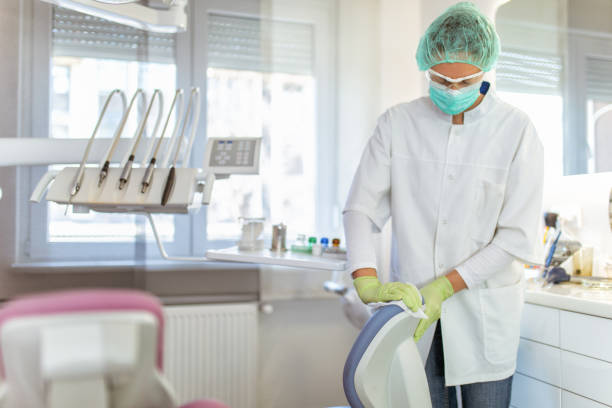
All facilities in a medical environment must follow legislative rules, regardless of the type of activity being conducted. It concerns the medical cleaning-disinfection steps that prevent the risk of infection. In this article, we provide advice and recommendations on how to clean healthcare facilities.
In the health sector, it is necessary to limit the risk of infection linked to the environment to guarantee the protection of personnel and users. Medical Cleaning contributes to the general hygiene of health establishments and medico-social establishments. It involves keeping the premises visually clean with the removal of waste and dirt. We maintain bacteriological cleanliness with the disinfection of all surfaces, equipment, and utensils. To control the level of microbial contamination of the environment, a set of simple rules must be put in place.
Classification of risk areas
Medical cleaning and disinfection requirements must be classified according to the infectious risk identified (low, medium, high risk, etc.). They depend on the premises, the medical activities carried out, the type of patient and the medical procedure.
Based on this classification, specific to each establishment, it is possible to determine how often the premises require maintenance.
- Sanitary facilities
- Waiting room
- Treatment room
To define an intervention schedule on daily or multi-daily maintenance. Choose the techniques, applied – disinfection, and bio-cleaning and the materials and products used (microfiber, disinfectant, pre-impregnated gauze, etc.)
Following are the following tasks and action plans: Clothing, hand washing, and cleaning the bins; wet, sweeping, washing with detergents and disinfectants; equipment used – broom, trolley, mono rush, operating procedures, and personnel involvement.
The choice of equipment and products
for the maintenance of premises in the care environment
For manual or mechanical cleaning work, the choice of equipment and cleaning products are part of the procedures that help maintain a safe, sanitary environment wherever the risk of disease transmission is present.
- There are several types of cleaning and disinfection equipment, and the choice depends upon the constraints of use related to each environment: dusting and wet sweeping with trapeze broom, washing strips for disinfection of floors with a tank broom, microfiber cloths for bio-cleaning – ICA Satin microfiber cloth -, pre-impregnation method with cleaning trolley and gauze, etc.
- To be effective, the choice of chemical product must consider the area of application and its spectrum of activity defined by Australian standards: detergent, bactericidal disinfectant, fungicide, virucide, etc…. (*). Some manufacturers that specialize in the design, production and marketing of professional hygiene and disinfection products suitable for sensitive places.
Cleaning rules according to cleaning areas
If cleaning in a medical environment meets strict standards, it is also necessary to respect work organization and simple standard precautions, whatever the areas to be treated. You should clean before disinfecting, or use a disinfectant container, decontaminate from top to bottom, wear the proper clothing, and follow the established protocol.
Have a dedicated cleaning room
A specific cleaning and storage room must be available for this activity: storing and cleaning equipment and maintenance products. Set up around three separate areas to separate storage, maintenance and administrative tasks related to procedures (traceability, orders, etc.). Equipment must include all the equipment necessary for working: sink, shelving and cupboards, liquid soap dispenser, hand towel dispenser, hydroalcoholic product dispenser, table, chair, detergent product dilution unit if you choose this option.
Read More: Best Bar Soap Packaging Are Available In USA | Packhit




